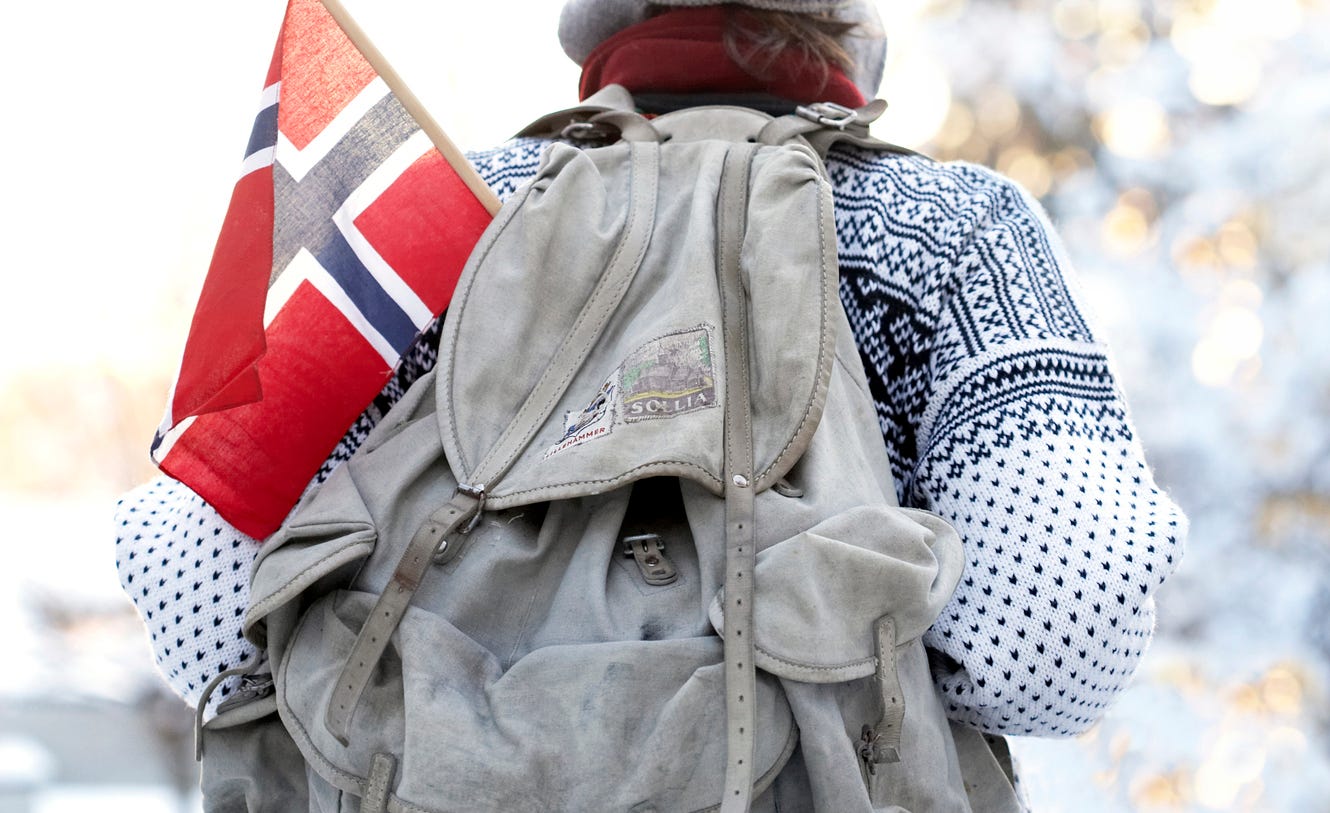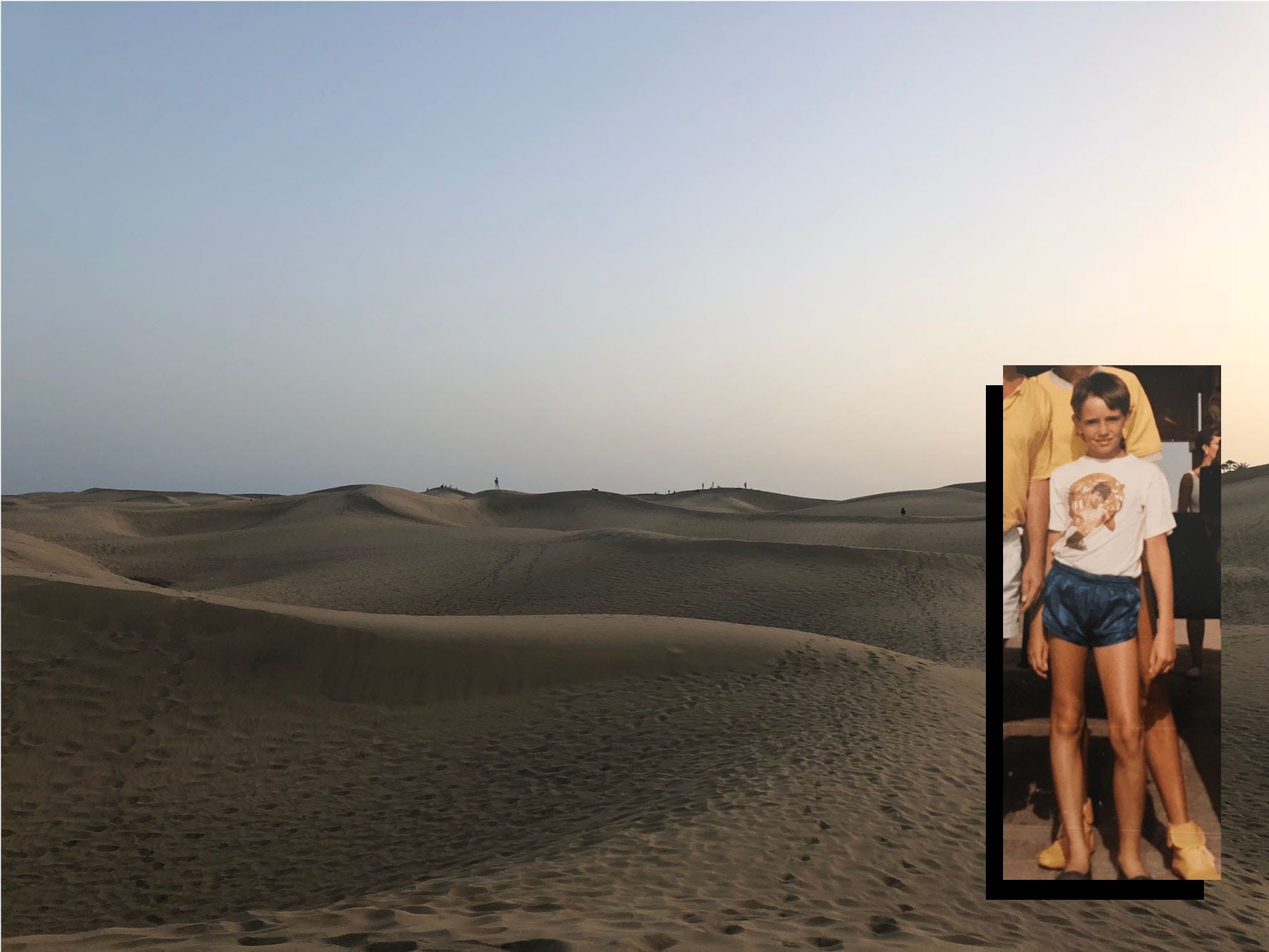A Brief History of The Norwegian Charter Holiday
Pre-1950, the general way of Norwegian tourism was simple: Some vacationed in cabins, others at campgrounds. Most trips were domestic, though more adventurous tourists would venture into other Scandinavian countries.
Then, in 1950, things started changing.
Charter trips to Spain first hit Norway through a Danish tour company called Nordisk Bustrafik. They transported Scandinavians southward with buses and, as the destination became more popular, airplanes. By 1959, Norwegian tour operator Erik Myhres Reisebyrå started its own shuttle, flying four hundred passengers from Oslo to Spain in its first year. A two-week all-inclusive trip would set you back 1,500 NOK per person ($170, equivalent to $1,650 today).
This type of package-holidays is common in many countries, but the way charter travel manifested itself in Norway’s soul is unique. I’m speaking from experience: From the 1980s through the mid-nineties, my family traveled to Gran Canaria—a Spanish island—more times than I can count.
The thing to know about Norwegians is that we’re a reserved people—showing emotions is frowned upon, and we generally assume we’ll be mugged if a stranger approaches us. In that sense, it is somewhat of a dream vacation only interacting with tour guides while being corralled from Oslo to a Spanish hotel.
Yet, here is where the glacial Norwegian stereotype breaks apart into something less known: a concept called “charter fever.” This abnormality takes hold as soon as the plane touches down in Spain. Passengers cheer and embrace, even hugging strangers if they have enough “innabords.” (Ie. too much to drink.)
“I don’t know why they applaud,” my dad would say. “We have to hit the ground one way or other.” At least he kept the stoic Norwegian stereotype alive.

At the chartered hotels are pools—giant ones—and kids clubs designed to offload tired parents. Guided tours can be booked daily to everywhere from zoos to cowboy theme parks (a personal favorite and a sign of things to come).
More intrepid travelers have opportunities to sample “local culture” without being too adventurous. Shops peddle knick-knacks and souvenirs, speaking nigh-fluent Norwegian—at least until you try to haggle. Restaurants with menus printed in conservatively seven languages cater to tourists. Many waiters can cobble together enough Norwegian phrases to seat any novice traveler.
Some thrifty entrepreneurs have taken further advantage of charter culture: Scandinavian-themed bars are particularly popular among those of a “certain age” who travel exclusively for sun and cheap booze. Coffee and brandy in the morning; beer and wine the rest of the day.
Younger travelers will come for similar reasons, but rather spend the first half of the day recovering from nights at questionable clubs. Family-friendly as these charter destinations are, their underbellies hold less savory experiences. A first-hand account of a group being chased by a one-eyed man with a dagger still haunts me.
The Road Less Traveled

There is, of course, more to Gran Canaria than boilerplate tourism. Some travelers may stick to the aforementioned shenanigans, but there is more to see than Ola’s Nordic Bar on an island with 800,000 inhabitants.
Head north, and you’ll find Las Palmas, a metropolitan city in the vain of Valencia or Sevilla. It’s a place full of culture and local history, which you can explore for days.
Up in the mountains is Finca La Laja, Europe’s only region for coffee beans. Their tasting menu—brewed from fresh beans—is as good as Stumptown or Ladro. There is plenty of hiking to be done in those hills, too.
During my family holidays, we tended to experience a bit of everything—hotels, beaches, and accessible restaurants on the one hand; exploring on the other. I suspect that ultimately is the case for many—a combination of convenience, comfort, and culture.
We returned to Gran Canaria in 2018, the first time in about twenty years for me. It was striking how little had changed: The Norwegians, the backpacks, the Scandinavian bars—all going strong. Even our hotel of choice from the nineties had the same staff.
With age comes an appreciation for things I might not have noticed before. The touristy boardwalk restaurants are cheesy, but the quality of the food is often surprisingly good. And while Playa Del Ingles—our preferred location—is less than an adventurous city, I have to admit there is something to be said for how easy it is. Nigh everything is accessible on foot.
And it stands repeating: the “real” Gran Canaria is a short drive away.
From a Norwegian perspective, charter travel is here to stay, even though it doesn’t have the same hold it once had. Greece and Turkey are more popular destinations than Spain these days, but going to “syden” (the Norwegian colloquial name for the Spanish islands —“the south”) is a part of Norway’s soul. There’s even a Norwegian reality show called Charterfeber (Charter Fever), which has been around for a decade.
Gran Canaria is a destination worth visiting. It isn’t too common of an island for non-European travelers, but if you want to experience both resort-style accommodations and local exploration, it is entirely possible to do so there.
Plus, put a flag in your backpack, and you likely will be hugged by a random Norwegian—not many will live to tell that story.
Fun Fact!
Gran Canaria has tried to become a location for A-list movies in recent years, and Fast & Furious 6 briefly took place there. (Until Dom once again had to leave to save the family.)
Sources
Web Pages
“Pakketur.” Wikipedia. December 13, 2021. https://no.wikipedia.org/wiki/Pakketur
“Norrønafly.” Wikipedia. January 1, 2020. https://no.wikipedia.org/wiki/Norrønafly
